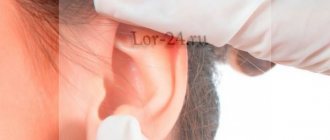When taken in the recommended order, allergy shots can provide significant symptom relief/TSN Allergy shots and shots, also known as allergen immunotherapy, consist of a series of treatments designed to provide long-term relief from severe allergies.
Allergy shot
- Who is suitable for allergy shots?
- How do allergy shots work?
- Preparing for allergy shots
- Procedure
- Efficiency
- Side effects
- Forecast
You may consider allergen immunotherapy if you have severe allergy symptoms that are interfering with your daily life, even after you have made changes to your lifestyle and adopted an allergy-friendly diet. Injections may be used to treat allergies due to:
- dust mites
- feathers
- dust
- pet dander
- pollen
- insects
When taken in the recommended order, allergy shots can significantly relieve symptoms. At the same time, this treatment option requires long-term use to achieve a prolonged effect.
Who is it suitable for?
You must be able to devote time to this treatment method. The therapy requires frequent injections at your doctor's office. Allergy shots can be used by people who have:
- allergic asthma
- allergic rhinitis
- eye allergies or recurring conjunctivitis
- allergies to insects, especially bees and other stinging insects
You may be a good candidate if you have year-round severe allergy symptoms and do not want to take medications for an extended period of time. This treatment method tends to work best for people who are sensitive to inhaled allergens and insect poisons.
Antiallergy vaccinations are used only for patients over 5 years of age. This is because children under 5 years of age may not be fully aware of the potential side effects and discomfort that may require discontinuation of treatment. It is also not recommended to get allergy shots if you are pregnant or have heart disease or severe asthma.
Histamine receptor blockers
They can be considered real antiallergic injections - the mechanism of action is due to the inhibition of histamine-sensitive receptors.
They also reduce the production of histamine, which is involved in the development of an allergic reaction.
After the injection, allergy symptoms decrease.
The range of injectables is small and consists of first-generation drugs.
A characteristic feature of this group is a sedative effect, manifested by lethargy, drowsiness, and retardation of psychomotor reactions. Therefore, drivers and persons whose professional duties require quick reactions should limit their mental load.
In addition, such drugs narrow the lumen of blood vessels and some internal organs - the urinary tract, stomach.
This effect should be taken into account in patients with:
- Disorders of urination of various etiologies;
- Pathologies of the cardiovascular system;
- Hyperthyroidism, etc.
Note! When conducting skin tests for allergens, the use of antihistamines is stopped 3 days before the test.
When using other medications, you must read the instructions for compatibility with the antiallergic drug.
Diphenhydramine
The earliest representative of antihistamine medications.
The drug molecule is represented by diphenhydramine.
Additionally used for vomiting.
Has no age restrictions.
The use of the drug is limited in case of hypersensitivity to active and auxiliary components.
Injections are available with a doctor's prescription.
The cost of 10 ampoules is 27 rubles.
Tavegil
Swiss product based on clemastine.
In addition to the effects characteristic of other antiallergic drugs, it has a pronounced antipruritic effect, so its use is advisable in patients with skin manifestations.
The purpose of the drug is limited:
- In infancy under 1 year of age;
- For pathologies of the lower respiratory tract, bronchial asthma;
- In case of individual intolerance.
Breastfeeding and pregnancy are reasons for refusing injections.
Single dose - contents of 1 ampoule.
Both intravenous and intramuscular administration are allowed.
The price of 5 ampoules is about 300 rubles.
Pipolfen
A Hungarian drug containing promethazine.
Indicated for intravenous and intramuscular administration.
Each ampoule is designed for 1 administration.
Allowed for children from 2 months of age.
If you are breastfeeding, pregnant, alcoholism and other conditions accompanied by depression of the nervous system, sleep apnea syndrome, closed-angle glaucoma, you should not take the medicine!
For 10 ampoules you will have to pay about 1100 rubles.
Suprastin
Injections based on chloropyramine.
The daily dose is no more than 2 ampoules.
Restrictions on use are identical to other antihistamines.
140 rubles - this is the price of 10 ampoules.
How do allergy shots work?
Allergy shots work by reducing symptoms from certain allergens.
Each injection contains a small amount of the allergen, so your body develops immunity to it over time. This process is very similar to taking a vaccine, where your body creates new antibodies to fight off invasive substances. Allergy shots also improve the way other immune system cells and substances respond to allergens. Ultimately, successful immunotherapy helps the body fight allergens and reduce adverse symptoms.
Allergy shots are aimed at reducing common allergy symptoms. Reducing asthma symptoms is also possible if it is allergic in nature.
How to give an injection correctly
Before administration, the ampoule must be warmed in your hands, which will reduce pain and ensure faster absorption of the active component into the blood. After thoroughly washing your hands with soap, the injection site and the tip of the ampoule are disinfected with medical alcohol. By lightly tapping on it, they ensure that the entire composition falls down.
It is recommended to use a 5 ml syringe and a long needle so that the composition ends up in the muscle tissue and not the superficial fatty tissue. The syringe with the solution is turned over and the plunger is pressed until droplets of the drug appear at the tip of the needle.
Preparation
Before starting immunotherapy, you will need to undergo a complete allergy screening. Your doctor should know exactly what substances to use for injections. For example, if you have allergies during pollen season, he will check which types of pollen are causing your symptoms. Rapeseed and various tree pollens are common stimulants.
Allergy testing usually consists of skin pricking. During this test, your doctor will prick the skin of your back or forearm with several types of allergens to determine which ones cause reactions.
All tests and treatment with allergy shots are carried out by a specialized allergist or immunologist.
The use of calcium chloride for allergies
This is one of the most popular uses of calcium chloride. To treat allergies, the drug is used along with such well-known products as Tavegil, Suprastin or Lazolvan.
With the help of calcium chloride you can perfectly cleanse the body, removing toxins, harmful substances and allergens from it. The product will also help in the fight against cramps that sometimes accompany allergic attacks.
In addition to the fact that injections are used to treat allergies, you can drink calcium chloride. The product works extremely well and quickly.
The permissible dose of calcium chloride for oral administration is 0.25 or 1.5 g.
For intravenous administration of the drug, ml of calcium chlorine should be mixed with sodium chloride or five percent glucose.
More than 6 drops of the product per minute cannot be injected into the body.
Procedure
Once your doctor identifies your allergens, you will begin receiving allergy shots. The process is divided into two phases: build-up and maintenance.
The build-up stage requires the most time. You receive injections up to twice a week to help your body become accustomed to the allergens. This phase lasts up to six months.
The maintenance phase consists of injections given once or twice a month. You enter this phase once your doctor determines that your body has become accustomed to the injections. They base this decision on your reaction to the injections. The maintenance phase lasts from 3 to 5 years. It is important that you do not skip any of your treatments if possible. This may interfere with the course of treatment.
You will need to remain in the doctor's office for 30 minutes after each injection to monitor for any side effects or reactions.
Directions for use and doses
The usual treatment regimen involves 1 ampoule per day. If necessary, the rate is doubled. Injections can be taken in parallel with other forms of the drug. The average course of treatment is 2 days. Maximum daily 150 mg. Based on this norm, you can calculate how many injections are allowed per day.
The amount of medicine for children is calculated by the formula: 2 mg × weight. The obtained values are evenly divided into several steps. To continue treatment, use tablets, capsules or rectal suppositories. Depending on the diagnosis, combination with muscle relaxants such as mydocalm or antispasmodics is possible.
Efficiency
Allergy shots may provide long-term relief after the injections stop. Some people who have used allergen immunotherapy may no longer need treatment for their allergies. You may even notice some benefits during early maintenance therapy.
In some cases, allergy shots don't work. This may be due to a number of reasons, including:
- stopping treatment due to reactions
- prolonged exposure to extremely high levels of allergens
- there is not enough allergen in the injections
- ineffective allergen testing
Side effects include reactions similar to hives or mosquito bites at the injection site/ Pixabay
Hormonal injections
Glucocorticosteroid hormones are indicated for the treatment of allergic diseases.
The use of such funds must be justified.
They cannot be used without a doctor's prescription, because... uncontrolled use can cause serious side effects:
- Endocrine disorders (hormone deficiency, menstrual irregularities, deterioration in absorption and utilization of glucose, diabetes mellitus and hyperglycemia, Cushing's syndrome);
- Metabolic imbalance (sodium ion retention, edema, hyperglycemia, weight gain, alkalosis, etc.).
Side effects
Common side effects include reactions similar to hives or mosquito bites at the injection site. The injection area may be swollen. This type of reaction is normal and may last for several hours before going away without any treatment.
Some people experience allergy symptoms after injections as a reaction to the injected allergens. These include nasal congestion, sneezing and itchy skin. Taking an antihistamine may help relieve these symptoms.
In rare cases, allergy shots can cause a serious reaction called anaphylaxis. During anaphylactic shock, you may experience dizziness and difficulty breathing. This reaction can occur within 30 minutes of receiving an allergy shot. Your doctor will likely ask you to stay in the hospital for half an hour after the injection so they can monitor you for this type of reaction.
If you get sick, tell your doctor. You may have to skip the injection until you recover. For example, getting an allergy shot for a respiratory illness may increase the risk of side effects.
Side effects from injections
If this is not followed, the following may most often occur:
- necrosis (disintegration) of tissues when the drug enters surrounding tissues,
- local inflammatory and general infectious processes in violation of asepsis rules.
Drug embolism
Subcutaneous and intramuscular injections can cause dangerous complications, one of which is drug embolism.
The most important reason for the development of pathology is non-compliance with injection techniques. When a syringe needle enters a blood vessel, the oily solution can clog the artery, causing thromboembolism in the area and necrosis. Sometimes the disease occurs if the injection is made into a dense infiltrate that appeared as a result of a previous injection.
Risk factors for the development of pathology are:
- violation of aseptic requirements;
- accelerated infusion;
- using an insufficiently heated solution.
- It should be noted that oil solutions should not be administered intravenously.
In a hospital setting, such incidents are excluded, but at home, patients sometimes use medications incorrectly, which becomes the cause of oil embolism.
Forecast
Many people respond well to allergy shots and can actually get rid of them. It may take a year before you see results. If you don't see any improvement after a year, you may need to talk to your allergist about other allergy control options.
If you have food allergies, talk to your doctor about how to avoid eating the foods you are allergic to. Allergy shots are not effective in treating food allergies.
Author: Alena Kyupeli
Other indications for use
In gynecology, hot injections are actively used. Their courses are prescribed during menopause to prevent bone fragility from calcium deficiency. Injections also eliminate bleeding in the uterus, because... increase blood clotting and strengthen blood vessels. At the same time, many people ask the question: is it possible to do hot injections during menstruation? Yes, they are prescribed just when there are complaints of severe pain during this period.
Hot injections are administered if inflammation of the appendages is diagnosed. Thus, the patient can get rid of the risk of tubal obstruction. The anti-inflammatory effect is also useful after a miscarriage or missed pregnancy. A course of hot injections gives you a chance to get pregnant again, because... eliminates the occurrence of pathologies of the uterine mucosa.
In addition to gynecology, treatment with hot injections is also common in phlebology. Doctors prescribe a course of injections for varicose veins of the legs. Often, such therapy for veins can be prescribed as prevention.
What complications can there be?
Hot injections under some conditions can cause great harm to the human body. If a calcium drug is accidentally injected into a muscle, necrotic lesions of soft tissue may develop.
Another common complication of administering medications with calcium is local edema. This effect is observed with chemical damage to the walls of a blood vessel. To eliminate signs of such a complication, you need to make an iodine mesh or an alcohol compress. You should not overexert your hand for several days. In most cases, all symptoms disappear after 4-5 days.
Often a large hematoma occurs in the area where the drug was administered. Such a violation is not uncommon when the drug is administered intravenously. In most cases, defects disappear after 3-5 days.
More dangerous complications of using injections include allergic reactions. To exclude such undesirable consequences, it is recommended to conduct preliminary tests to determine the presence of individual intolerance.
In rare cases, patients experience inflammatory reactions. They often develop due to air entering the vein. This condition is extremely dangerous, because... can cause vein blockage and be fatal. If this complication develops, the patient requires urgent medical attention.
Spinal anesthesia for caesarean section
Caesarean section is the surgical removal of the fetus with manual separation of the placenta. Anesthesia is mandatory. Spinal anesthesia for caesarean section – eliminates the risk of drug exposure to the baby. Spinal anesthesia for caesarean section was first used in 1900 by Kreis. Spinal and epidural anesthesia is used almost everywhere, unless there are contraindications to use. The injection is given once during neuraxial anesthesia (which is the main difference with the epidural technique, where a catheter is inserted to administer the drug).
Consequences of spinal anesthesia
As with any anesthesia, SA has natural consequences. The largest study on the consequences was conducted over 5 months. in France. The results and complications of spinal anesthesia in more than 40 thousand patients were analyzed. The number of serious complications is as follows:
- death – 0.01% (6 people of the total);
- convulsions – 0;
- asystole – 0.06 (26);
- root or spinal cord injury – 0.06% (24);
- cauda equina syndrome – 0.01 (5);
- radiculopathy – 0.05% (19).
Common negative consequences include:
- bradycardia, a slowing of heart rate, which, if left untreated, can lead to cardiac arrest;
- urinary retention (men suffer more often);
- increased intracranial pressure;
- spinal hematoma;
- nausea, dehydration;
- PDPH is post-puncture headache, a common complication that causes complaints from patients.
Spinal anesthesia - contraindications
Indications for spinal anesthesia are varied; they are divided into two types: relative and absolute. Relative contraindications include:
- emergency cases when there is no time to carry out all preparatory procedures with the patient;
- unstable mood (lability) of the patient;
- abnormal disorders of the structure of the spine;
- birth defects or fetal death;
- increased intracranial pressure;
- the risk of bleeding and the uncertainty of the timing of the operation;
- hypoxia, diseases of the central nervous system.
Absolute contraindications for this type of anesthesia include:
- patient's categorical refusal;
- lack of conditions for resuscitation and poor lighting;
- allergy to anesthetics;
- skin infections: sepsis, herpes, meningitis;
- intracranial hypertension.










